Roundup: Faculty + Research Headlines
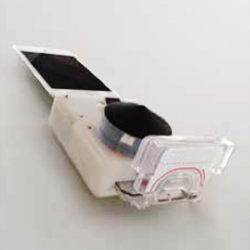
Deft Diagnosis
A team of researchers led by Samuel K. Sia, associate professor of biomedical engineering, has developed a major advance in miniaturized low-power diagnostics hardware for rapid and inexpensive point-of-care diagnosis of diseases including HIV and syphilis.
Sia’s innovative dongle, a small device that connects easily to smartphones and computers, can perform a laboratory-quality test that simultaneously detects three infectious disease markers from a finger prick of blood in just 15 minutes. Powered by mechanical action and a phone or computer’s standardized audio jack, the accessory performs an enzyme-linked immunosorbent assay (ELISA) on disposable plastic microfluidic cassettes with pre-loaded reagents, and reveals results via a user-friendly app. Sia estimates the dongle will have a manufacturing cost of $34, much lower than the $18,450 at which typical ELISA equipment runs.
The dongle was recently piloted to great success in Rwanda, where health care workers were able to test blood samples from nearly one hundred patients enrolled at clinics and testing centers after just 30 minutes of training. Because the dongle is vastly cheaper than conventional laboratory equipment, Sia hopes it will enable large-scale screening efforts and better care both in the developing world and closer to home.
Science Translational Medicine published the research on February 4. The study was funded by a Saving Lives at Birth transitional grant and the Wallace H. Coulter Foundation.
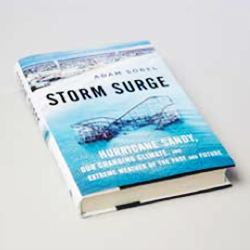
Understanding Superstorm Sandy
Professor Adam H. Sobel’s new book, Storm Surge: Hurricane Sandy, Our Changing Climate, and Extreme Weather of the Past and Future, was released in october to wide acclaim. Published by HarperCollins, the work of popular science explores the climatic conditions that created the catastrophic 2012 “Superstorm” and what scientists expect to occur in the future.
Sobel, professor of applied physics and applied mathematics at Columbia Engineering and of earth and environmental sciences at the Lamont-Doherty Earth observatory, is a globally renowned atmospheric scientist and leading expert in the study of climate and extreme weather events. During the approach, landfall, and traumatic aftermath of the storm that battered New York City and much of the United States’ northeastern coastline, Sobel was a prominent voice in the media on the science behind the disaster.
Drawing on Sobel’s expertise as a scientist and New Yorker, Storm Surge examines the atmospheric factors that set Sandy on its fateful path, the advances in weather prediction science that empowered mete- orologists to accurately forecast the storm, the links between climate change and extreme weather, and what policies might help coastal communities better prepare for storms to come.
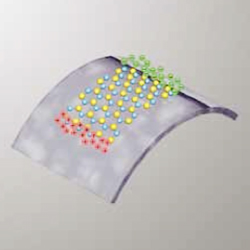
The World's Thinnest Electric Generator
Mechanical Engineering Professor James Hone helped lead recent research that developed the world’s thinnest electric generator from just a single layer of atoms.
In a paper published in Nature in October, researchers from Columbia Engineering and the Georgia Institute of Technology reported the first experimental observation of piezoelectricity—the phenomenon by which stretching or compressing a material generates an electrical voltage—in an atomically thin layer of molybdenum disulfide (MoS2). Intriguingly, neither thick layers of MoS2 nor samples with very small even numbers of atomic layers are piezoelectronic, but only material in very small odd numbers of layers.
Hone and his research team, led by postdoctoral fellow Lei Wang, placed flakes of MoS2 on flexible plastic substrates and patterned metal electrodes onto the flakes, while the Georgia Tech team installed measurement electrodes and measured current flows and outputs as the samples were mechanically deformed. Tony Heinz, a professor of optical communications at Columbia Engineering, also contributed to the research.
The resulting ultralightweight electric generators and mechanosensation devices are optically transparent, extremely pliable, and rich with potential applications. MoS2 is among an array of two-dimensional semiconducting materials that theoretically share similar piezoelectric properties and could contribute to novel devices like body-powered wearable sensors and self-powered nanosystems capable of harnessing energy from the environment.
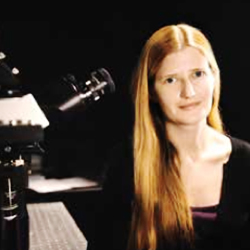
Reinventing 3D Microscopy
A new 3D microscope devised by Professor Elizabeth Hillman is poised to enable significant advances in biomedical and neuroscience research. Known as SCAPE—for swept confocally aligned planar excitation microscopy—the technique can image freely moving living things in real time, up to 100 times faster than conventional methods.
Hillman, associate professor of biomedical engineering at Columbia Engineering and of radiology at Columbia University Medical Center, built a prototype with her students from off-the-shelf materials after envisioning a simple, single-objective imaging geometry that didn’t necessitate sample mounting or translation. A novel variation of light-sheet microscopy, SCAPE is fast, easy to use, and surprisingly inexpensive.
Hillman and collaborators, including colleagues from the Mortimer B. Zuckerman Mind Brain Behavior Institute and the Kavli Institute for Brain Science at Columbia, have already utilized SCAPE to closely observe the 3D dynamics of fruit fly larvae, zebrafish hearts, and neurons firing in rodents’ brains. The system may soon enable groundbreaking research in microfluidics and flow-cell cytometry systems, while potential clinical applications include video-rate 3D microendoscopy and intrasurgical imaging.
Columbia holds an issued patent on the technique behind SCAPE, and Hillman and her students are continuing to develop the system for commercialization. At press time, the technology was available for licensing from Columbia Technology Ventures.
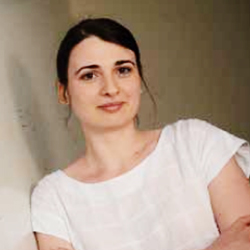
The Future of Cybersecurity
Roxana Geambasu, assistant professor of computer science, capped off a remarkable 2014 when Popular Science placed her among the Brilliant Ten, the venerable magazine’s annual list of the “brightest young minds in science and engineering.” Earlier in the year, she also received a prestigious Microsoft Research Faculty Fellowship and a CAREER Award from the National Science Foundation, all for her groundbreaking work in cybersecurity.
Popular Science profiled Geambasu’s innovative research advancing privacy and data security in the age of cloud computing, ubiquitous phones and tablets, and web services that harvest users’ personal information beyond scrutiny or control. The magazine wrote that Geambasu “exposes how companies use your data” and “allows people to see where the information they upload to the cloud goes,” describing programs she’s written to make data self-destruct after a set time and to reduce potential data theft from misappropriated mobile devices.
Geambasu collaborates extensively across fields to integrate a broad range of systems research specialties, drawing insights from cryptography, distributed systems, and operating system techniques. She aims toward a future where companies are more transparent about how they use and protect sensitive data.
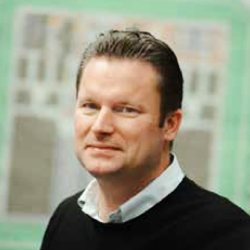
Seamless Innovation
Seamless Devices was cofounded by Jayanth Kupambatti PhD’14 and Electrical Engineering Professor Peter Kinget in December of 2013. The company’s core technology, Switched-Mode Signal Processing (SMSP), started as a research project in Kinget’s group that attracted seed funding from the National Science Foundation (NSF) Small Business Innovation Research (SBIR) Phase I program and the Columbia SEAS Ignition Fund.
The immense potential of SMSP for next-generation systems attracted the attention of Allied Minds, a Boston-based venture capital firm that specializes in spinning out early-stage technologies from universities and federal labs. With financial and management backing from Allied Minds, Seamless Devices is working on solutions for the semiconductor intellectual property (IP) market, which involves developing and licensing circuit designs that are incorporated into system-on-chip integrated circuits. As a first market application, the company is pursuing analog-to-digital converters (ADC) for telecom applications, meeting an accelerating demand for ADCs that can operate at high bandwidth and high resolution with low power consumption.
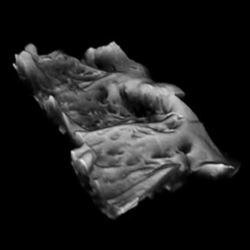
How Can You Mend a Broken Heart?
Christine Hendon, assistant professor of electrical engineering and director of Columbia’s Structure-Function Imaging Library, received a New Innovator Award from the National Institutes of Health (NIH) in October. She is one of just 50 engineers and scientists selected to receive $1.5 million over the next five years for “proposing highly innovative approaches to major contemporary challenges in biomedical research.”
Hendon, whose work concentrates on advancing optical imaging and spectroscopy for interventional cardiology and cardiac electrophysiology, will use the grant to develop instruments that can better image the myocardium, or muscular middle layer of the heart wall. While catheters are the standard tool for guiding heart therapies, high-resolution real-time optical imaging and signal analysis could vastly enhance practitioners’ ability to diagnose and treat myocardial diseases and abnormalities.
Hendon’s multiscaled approach utilizes optical Coherence Tomography (oCT) for cellular-level imaging of the myocardium, develops classification algorithms to do the imaging in real time, and prototypes high-resolution catheters for three-dimensional imaging and optical biopsy. Her pioneering research promises to provide important insights into tissue remodeling and become a significant new tool for understanding and treating ailments of the heart.
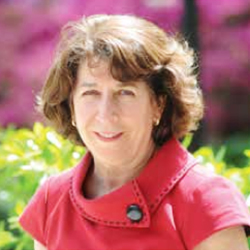
Disaster News Summarized Quickly
As the magnitude of Hurricane Sandy became clear, so did the problem of wading through torrents of information about the storm’s aftermath. What if computers could be trained to sift through it all to weave a master narrative?
This question led computer scientist Kathleen McKeown to start building a system that could process disaster-news feeds in real time and automatically select and summarize the key points. She highlighted the project in a January 29 talk sponsored by the Data Science Institute, which she heads.
Using natural language processing tools, McKeown, Rothschild Professor of Computer Science, and her colleagues are training computers to sort through text from mainstream news, personal blogs, and social media conversations to extract and summarize the most relevant details. The challenges include teaching the computer to filter out redundant facts in stories covering the same event, and to recognize sub-events such as blackouts and flooding that may not be explicitly flagged as disaster related. McKeown’s work on disaster summarization builds on her earlier software project, Newsblaster, which identifies related news stories and sums up their main points.
McKeown said one future application of this research could be the translation of streaming social media in disaster zones. Many relief workers abroad do not speak the native language; the ability to get timely updates would allow responders to act more quickly and effectively.
